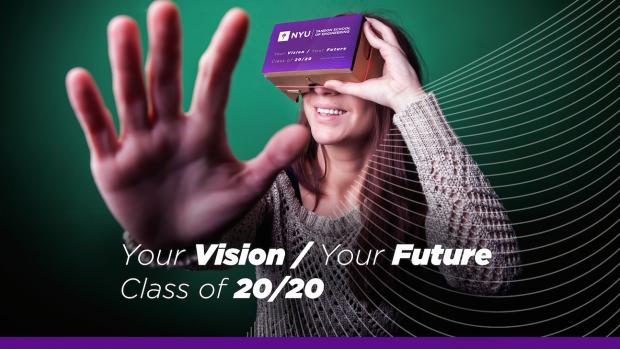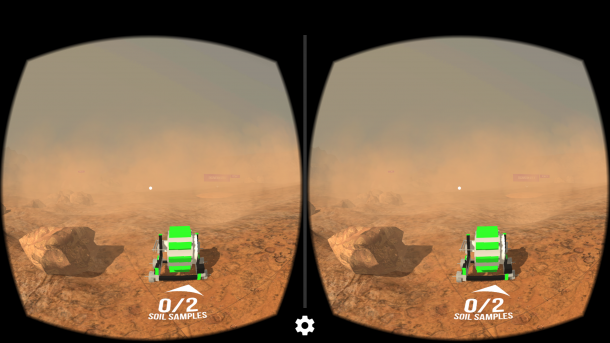Your Vision/Your Future
Looking at the World with Tandon Vision

It’s not uncommon for schools to tell their students that the sky is the limit, but the NYU Tandon School of Engineering has decided to show them.
Each member of the newly admitted undergraduate Class of 2020 living in the U.S. will be receiving in the mail a virtual reality (VR) device dubbed Tandon Vision, along with instructions for downloading a smartphone app that will allow them to take a virtual trip to Mars with a robot built by one of the school’s robotics clubs.
The project had its genesis when Elizabeth Ensweiler, Tandon’s director of enrollment management, noticed the growing popularity of virtual reality and augmented reality apps and realized that the technology could be a powerful tool for engaging with not only newly admitted students but anyone interested in Tandon and the innovative work being done here.
The app's robot was inspired by the work of the Lunabotics club
Fortuitously, she knew just where to turn: the school is home to the Mobile Augmented Reality Lab, a research group founded and directed by Mark Skwarek, who teaches in NYU’s Integrated Digital Media (IDM) Program. “My team and I wanted to highlight the fun and fascinating work students could become part of here,” Ensweiler explains, “so we hit upon the idea of having Mark’s lab create something pertaining to the work of the Lunabotics.” Members of that popular student club take part each year in the NASA Robotic Mining Competition, which requires them to design and build a robot capable of traversing notoriously challenging Martian terrain and efficiently excavating regolith, the loose material that covers the surface of the planet. (The challenge takes place each year on simulated terrain set up at the Kennedy Space Center.)
Skwarek approached Matthew Conto, a senior who had already amassed an impressive portfolio of games and apps during his time in the lab, and worked with him to create a Tandon-to-Mars VR adventure as a gift to incoming freshmen that would spotlight the Lunabotics club. The app would allow users to control a mining robot and attempt to gather as much regolith as possible — just as the participants in NASA’s annual challenge do. “We knew that Matthew would need to construct an extremely realistic world because many of the students admitted to Tandon are exceptionally interested in aerospace engineering and astronomy and would recognize any mistakes immediately,” Skwarek says.
When students receive their devices and download the app, they can pilot their virtual “Lunabot” up through the ceiling of the classroom and out into Conto’s meticulously detailed galaxy. (He drew upon material obtained from NASA, and the end result is such that a screenshot from the app looks almost identical to actual NASA photos.) The action is accompanied by a dreamlike soundtrack provided by Luke DuBois, who co-directs Tandon’s IDM Program.

A screenshot from Tandon Vision, a virtual reality app
Ensweiler says, “This was a wonderful way to showcase Tandon’s strengths in robotics and augmented reality, and we’ll be developing more apps in the future for use with Tandon Vision. We are considering virtual tours for prospective students who can’t get to Brooklyn, for example, or apps featuring the work of students in our newly constructed Maker Space.”
She believes that Tandon is among the first schools ever to use a VR device to interact with students — a fitting accomplishment for an institution at the cutting edge of engineering and technology research. Conto concurs. “Driving around on Mars, even virtually, is a powerful experience,” he says. “And Tandon gave me the skill set to make that happen.”






